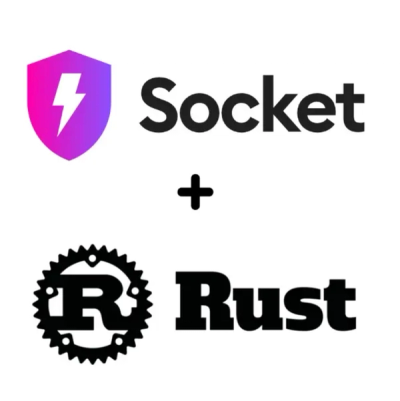
Security News
Crates.io Users Targeted by Phishing Emails
The Rust Security Response WG is warning of phishing emails from rustfoundation.dev targeting crates.io users.
github.com/rackspace/gophercloud
Gophercloud is a flexible SDK that allows you to consume and work with OpenStack clouds in a simple and idiomatic way using golang. Many services are supported, including Compute, Block Storage, Object Storage, Networking, and Identity. Each service API is backed with getting started guides, code samples, reference documentation, unit tests and acceptance tests.
Before installing, you need to ensure that your GOPATH environment variable is pointing to an appropriate directory where you want to install Gophercloud:
mkdir $HOME/go
export GOPATH=$HOME/go
To protect yourself against changes in your dependencies, we highly recommend choosing a dependency management solution for your projects, such as godep. Once this is set up, you can install Gophercloud as a dependency like so:
go get github.com/rackspace/gophercloud
# Edit your code to import relevant packages from "github.com/rackspace/gophercloud"
godep save ./...
This will install all the source files you need into a Godeps/_workspace directory, which is
referenceable from your own source files when you use the godep go command.
Because you'll be hitting an API, you will need to retrieve your OpenStack credentials and either store them as environment variables or in your local Go files. The first method is recommended because it decouples credential information from source code, allowing you to push the latter to your version control system without any security risk.
You will need to retrieve the following:
For users that have the OpenStack dashboard installed, there's a shortcut. If
you visit the project/access_and_security path in Horizon and click on the
"Download OpenStack RC File" button at the top right hand corner, you will
download a bash file that exports all of your access details to environment
variables. To execute the file, run source admin-openrc.sh and you will be
prompted for your password.
Once you have access to your credentials, you can begin plugging them into Gophercloud. The next step is authentication, and this is handled by a base "Provider" struct. To get one, you can either pass in your credentials explicitly, or tell Gophercloud to use environment variables:
import (
"github.com/rackspace/gophercloud"
"github.com/rackspace/gophercloud/openstack"
"github.com/rackspace/gophercloud/openstack/utils"
)
// Option 1: Pass in the values yourself
opts := gophercloud.AuthOptions{
IdentityEndpoint: "https://my-openstack.com:5000/v2.0",
Username: "{username}",
Password: "{password}",
TenantID: "{tenant_id}",
}
// Option 2: Use a utility function to retrieve all your environment variables
opts, err := openstack.AuthOptionsFromEnv()
Once you have the opts variable, you can pass it in and get back a
ProviderClient struct:
provider, err := openstack.AuthenticatedClient(opts)
The ProviderClient is the top-level client that all of your OpenStack services
derive from. The provider contains all of the authentication details that allow
your Go code to access the API - such as the base URL and token ID.
Once we have a base Provider, we inject it as a dependency into each OpenStack service. In order to work with the Compute API, we need a Compute service client; which can be created like so:
client, err := openstack.NewComputeV2(provider, gophercloud.EndpointOpts{
Region: os.Getenv("OS_REGION_NAME"),
})
We then use this client for any Compute API operation we want. In our case,
we want to provision a new server - so we invoke the Create method and pass
in the flavor ID (hardware specification) and image ID (operating system) we're
interested in:
import "github.com/rackspace/gophercloud/openstack/compute/v2/servers"
server, err := servers.Create(client, servers.CreateOpts{
Name: "My new server!",
FlavorRef: "flavor_id",
ImageRef: "image_id",
}).Extract()
If you are unsure about what images and flavors are, you can read our Compute
Getting Started guide. The above code
sample creates a new server with the parameters, and embodies the new resource
in the server variable (a
servers.Server struct).
Cool! You've handled authentication, got your ProviderClient and provisioned
a new server. You're now ready to use more OpenStack services.
Engaging the community and lowering barriers for contributors is something we care a lot about. For this reason, we've taken the time to write a contributing guide for folks interested in getting involved in our project. If you're not sure how you can get involved, feel free to submit an issue or e-mail us privately. You don't need to be a Go expert - all members of the community are welcome!
If you're struggling with something or have spotted a potential bug, feel free to submit an issue to our bug tracker or e-mail us directly at sdk-support@rackspace.com.
FAQs
Unknown package
Did you know?

Socket for GitHub automatically highlights issues in each pull request and monitors the health of all your open source dependencies. Discover the contents of your packages and block harmful activity before you install or update your dependencies.

Security News
The Rust Security Response WG is warning of phishing emails from rustfoundation.dev targeting crates.io users.

Product
Socket now lets you customize pull request alert headers, helping security teams share clear guidance right in PRs to speed reviews and reduce back-and-forth.

Product
Socket's Rust support is moving to Beta: all users can scan Cargo projects and generate SBOMs, including Cargo.toml-only crates, with Rust-aware supply chain checks.